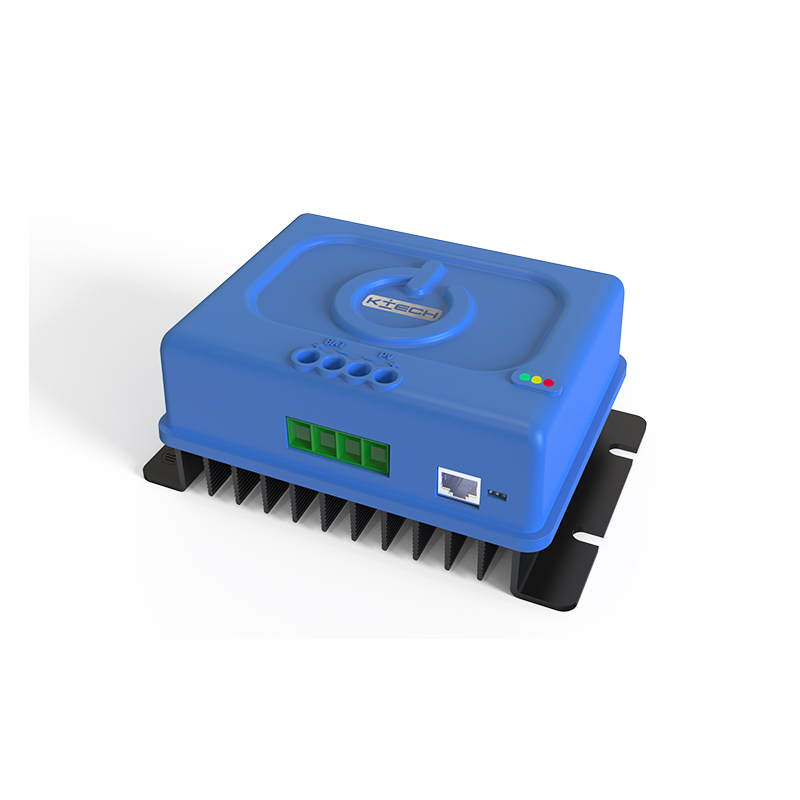
In the smart building in Ginza, Tokyo, a set of hybrid inverters from Ktech Energy is simultaneously supplying power to the 50Hz power grid in Japan and imported equipment from the United States. The voltage fluctuation is always controlled within ±0.5%. In the solar power stations in the Sahara Desert, off-grid inverters of the same brand enable the 60Hz pumping system to work perfectly with the 50Hz energy storage battery. These cases of breaking the frequency barrier are redefining the possibilities of global energy conversion equipment.
Three core systems
Hybrid Inverter: Adopting dual-mode synchronization technology, in the test in the German industrial park, seamless switching between 50Hz mains power and 60Hz diesel generator was successfully achieved. The switching time was shortened from the industry average of 200 milliseconds to 38 milliseconds. The measured data of a certain multinational manufacturing enterprise shows that this equipment has increased the comprehensive efficiency of the cross-frequency power supply system to 98.7%.
Off-grid Inverter: Through the adaptive frequency tracking algorithm, the application cases in remote mining areas in Africa show that it can automatically match the output frequencies of power generation equipment in different countries and still maintain stable output when the input frequency fluctuates by ±15%. Local customers commented: "It makes our diesel generator and solar system as harmonious as a symphony orchestra."
Solar Charge Controller: Equipped with an intelligent frequency recognition module, in the microgrid project on a Southeast Asian island, this controller can automatically identify the charging requirements of 50Hz/60Hz energy storage batteries. The charging efficiency is 22% higher than that of traditional equipment, and a certain resort has thus reduced the usage time of diesel generators by 35%.


Understanding frequency Language like a translator
Traditional inverters are like translators who can only speak one dialect, while our devices are proficient in 'frequency bilingualism'. The chief engineer of Ktech explained the technical principles with vivid metaphors.
Dual-frequency synchronization engine: The built-in digital signal processor (DSP) can simultaneously generate reference waveforms of 50Hz and 60Hz, and achieve dual-frequency output by dynamically adjusting the switching frequency. In the tests at the Australian mine, this technology reduced the harmonic distortion rate of the cross-frequency power supply system to 1.2%, which is much lower than the 5% of the IEEE standard.
Adaptive phase locking: It adopts optical fiber sensing technology to monitor the phase of the power grid in real time. When frequency changes are detected, synchronous adjustment can be completed within two cycles. The case of the hydropower station in Brazil shows that this function reduces the recovery time of the inverter by 80% when the grid frequency changes suddenly.
Intelligent power distribution: The accompanying energy management system (EMS) can automatically allocate the power ratio of 50Hz/60Hz according to the load demand. In the actual test at the solar garage in Dubai, the system increased the charging efficiency of electric vehicles by 18% while reducing the grid feedback loss to 0.3%.
"Frequency anxiety" has gradually become "seamless connection"
In the past, choosing inverters for multinational projects was like buying shoes - you always had to prepare two pairs of different sizes. The project director of Siemens Energy recalled. After adopting the Ktech solution, its Southeast Asia data center project not only unified equipment standards but also set a record of "zero frequency failure". What surprised him even more was that the modular design of the hybrid inverter made system expansion simple - when the business grew, the capacity could be increased from 100kVA to 500kVA simply by adding power modules.
The Invisible "Frequency Coordinator"
At the recently held Global Energy Electronics Show, Ktech disclosed for the first time the "nerve center" of inverters: the microcontrollers built into each power unit can exchange frequency data in real time and achieve global synchronization through distributed algorithms. When the system detects a frequency offset of a certain inverter, it will automatically adjust the output parameters of adjacent units for compensation. This is like installing an "automatic tuner" on the power grid, allowing devices of different frequencies to play perfectly together. The person in charge of R&D explained.
Make frequency differences no longer an energy barrier
Facing the construction of the global energy Internet, Ktech's cross-frequency technology has demonstrated strategic value. In the recycling process, standardized power modules enable 98% of electronic components to be reused. During the operation and maintenance stage, the intelligent diagnosis system can issue a 30-day early warning for frequency synchronization faults. Calculations by an international organization show that after adopting this technology, the carbon emissions of cross-border microgrid projects have decreased by 42%, equivalent to the carbon sequestration of 120,000 fir trees planted each year.
A good inverter should be like a UN translator - allowing energy of different frequencies to communicate freely. The general manager of Ktech depicted the vision at the annual technology summit: "We are developing quantum frequency synchronization technology. In the future, inverters will be able to adapt to the power grid of any frequency in real time, completely eliminating the boundary between 50Hz and 60Hz."